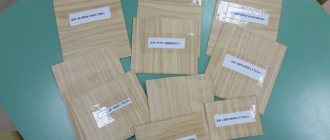Article “Introducing preschoolers to their native land”
Introducing preschoolers to their native land
Cultivating love for the Motherland, for one’s Fatherland, is an extremely difficult task, especially when it comes to preschool children. However, to a large extent, this difficulty arises when trying to transfer to children “adult” indicators of the manifestation of love for the Fatherland. Therefore, teachers in preschool educational institutions, first of all, need to understand for themselves the specifics of the process of forming love for the Fatherland in children, to understand the nature of the patriotic feeling itself, its structure, origins (on the basis of what feelings it is formed or, more precisely, without what emotional-cognitive bases cannot appear). Patriotism is a feeling of attachment, devotion, responsibility towards one’s Motherland, and the task of adults is to teach children to be attached to something, to be responsible in their small deeds and actions, that is, before the child learns to empathize with the troubles and problems of the Motherland, he must learn empathy as a human feeling in general. Thus, admiration for the vastness of the country, its beauty and natural resources arises in a child when he sees the beauty directly around him. Before a person learns to work for the good of the Motherland, he must be taught to conscientiously carry out work assignments and instill in him a love of work. Familiarization with the outside world must be considered through the concept of “attitude”, in which several directions can be distinguished:
- attitude towards the nature of the native land, native country;
- attitude towards the people inhabiting the republic, country;
- attitude to moral values, traditions, customs, culture;
- attitude towards government.
Each direction, except the last one, can become the content of work with preschool children. The teacher chooses the specific content of work with children depending on the immediate experience and interests of the children. It is important for the educator not to miss the moment when the need for information, geographical, historical or cultural research comes from the children themselves, when it turns into a motive for collectively distributed activity. For example, while reading fairy tales, adults and children discuss and find out what houses used to look like, and then build and decorate a model of a village hut. The main goal of the work to get acquainted with the native land: introducing the child’s personality into the field of native culture, into the spiritual atmosphere of the native land, city, village, village. In the process of getting acquainted with the native land, the following tasks are solved:
- enrich children's knowledge about their native land;
- to cultivate feelings of homeland, love and respect for the people of the native land;
- teach children to freely navigate their immediate environment;
- cultivate interest and respect for people of other nationalities.
The content of work with children to familiarize themselves with their native land includes the following topics:
- my house, my street, my kindergarten;
- the city (village) where we live (flora and fauna, main production institutions, streets, memorial sites, cultural institutions, people, etc.);
- our region (flora and fauna, main industries, human labor, main historical and memorable places, culture, customs, language, folk crafts, traditions), the capital of the republic (region);
- Russia (capital, coat of arms and anthem, national traditions, defenders of the Motherland; friendship of peoples);
- famous people of our region and country, writers, artists, etc.
In accordance with the topic, the teacher chooses the following forms of work with children to familiarize themselves with their native land:
- excursions to museums, art galleries, and memorable places; to churches, to enterprises, organization of observations;
- reading fiction, learning poems;
- looking at paintings, books and postcards about their native land;
- going to cinemas, theaters, cafes;
- hiking trips, organizing nature observations;
- viewing slides;
- album design on a given topic;
- holidays, concerts, friendship evenings;
- making attributes for these holidays;
- decorating the interior of the hut in the kindergarten premises;
- folklore classes;
- examination of folk arts and crafts products;
- making crafts during manual labor classes;
- artistic independent activity of children;
- conversations and conversations with children.
The greatest difficulty for educators is the work of familiarizing preschoolers with the history of their hometown (village) and its attractions. To make it interesting for children, it is necessary to present the material intelligibly, understandably, emotionally, starting with what surrounds children, what they can directly observe, gradually expanding the range of their knowledge, and, above all, taking into account their age. So, in the younger group you should not conduct classes and give children any knowledge about the history of the city. It is better to limit ourselves to observing with children the events taking place on the nearest streets, talking with them about where they had to be in the city, what they saw, what they remembered. In the middle group, you can already organize an acquaintance with the main attraction of the city (village), with the republic (region), in order to evoke in children a feeling of admiration for the beauty of their hometown (village), their native land, to emphasize that everything around was created by people who lived very, very long ago, but people remember their names and cherish what was made by the hands of masters.
Starting from the older group, you can introduce children to the history of your hometown (village): why the city (village) arose in this place, explain the names of the city (village) and the most ancient streets, tell about the founder of the city (village). One of the lessons can be devoted to getting to know the city’s coat of arms. It is advisable to carry out the work of introducing preschoolers to the sights of their hometown in such a way that there is logic and system in it, complicating it in the following sequence:
- history of the emergence of a city (village): the teacher begins the story about the history of the emergence of a city (village) with its location, in order to show children that people settled where there were favorable conditions for life: water, forests, fertile land; explains where the name of the city (village) came from, names the name or names of those who founded the city (village);
- history of street names: a story about how the history of the city (village) and the country is reflected in the names of individual streets. Special mention should be made of the names of the nearest streets where children live and where the kindergarten is located. Pay attention to the fact that the names of the first city streets came from the profession of craftsmen, who often settled together, along an entire street (blacksmiths - Kuznetskaya, etc.);
- buildings of the city (village): we should start with the fact that in the city (village) there are many buildings of different purposes - residential buildings, kindergartens, schools, shops, hospitals and others. Consider a museum, train station, theater, etc.); especially note the most ancient buildings, tell the history of their creation, point out their differences from modern buildings;
- people who glorified their city, their country; tell children about the most revered, famous people, how their memory is perpetuated. You can organize excursions to the monuments of these people or show their photographs. It is advisable that there be photographs (portraits) in the group’s book corner;
- recreational places for city (village) residents: talk about where these places are located in the city (village), and first invite the children to name them themselves, and then tell about them what children know little about. It is especially important to familiarize children with the museums of their city (village), explain what a museum is, for what purposes it is created, when the first museum appeared in Russia, what kinds of museums there are, and only after that can we move on to a story about the museums of our hometown ( village) - local history, art gallery, etc.
The most difficult part of getting to know your native land is writing stories for preschoolers, since there are few such stories in the methodological literature. Sometimes such stories can be very difficult for children. Therefore, when writing a story about the history of your native land, it is advisable to take into account the following:
- the story must be accompanied by visual material; these can be photographs, reproductions, slides, simple diagrams, chalk drawings on a blackboard, etc.;
- The teacher’s story should not be a pure monologue, but a dialogue, i.e. in the process of explanation it is necessary to address the children with certain questions, activate their attention, arousing interest, curiosity, the desire to find out something on their own, try to guess something himself;
- the teacher does not need to name dates, because they do not say anything and at the same time make it difficult to perceive the material. It is better to use expressions such as: “It was a long time ago when your grandparents were as little as you” or “It was a long, very, very long time ago when your mothers and grandparents were not in the world.” This is enough for children to understand that they are not contemporaries of the events narrated;
- the language of the story should be very simple; if there are unfamiliar words, they need to be explained;
- When talking about a building, there is no need to consider the architecture in detail or use special terminology.
As practice has shown, by the time a child enters primary school, that is, by the age of 7, he has the following development indicators:
- has some cultural and historical ideas about the history of his family (where the family lived before, what the grandparents did, how their life differed from ours, etc.), about the history of the street, district and city (village), culture;
- knows the main symbols of his city (village), republic and state;
- shows interest and has a friendly attitude towards manifestations of other cultures that differ from the native one.
Thus, the basis for acquaintance with the native land is the principle of thematic planning in cycles. Topics included in a certain cycle should be repeated over the course of a year or several years, gradually becoming more complex and enriched with new tasks in accordance with age capabilities. The themes of the cycles are directly related to the experience children already have, to their perception of the world.
Work in this direction is based on the harmony of family relationships. Children need to be given the knowledge that the family hearth is light and warm, friendship and the joy of communicating with loved ones. With the help of conversations, lullabies, songs about elders, children are instilled with love for their mother, grandmother, father, and grandfather. The use of oral folk art in conversations with children helps to foster love and respect for loved ones, and to form a child’s idea of himself as a representative of his own family.
In conversations and games, especially the role-playing game “Family”, there is a playful development of the traditions of communication in the family, relationships with mother, father and other family members. When compiling a family tree (four or more generations) together with their parents, children will learn information about their ancestors, noble people of their family, and their occupations. Excursions are conducted to the parents’ place of work, and joint holidays, events and games are organized with adults. Children talk about family leisure time. Through folk tales, legends, proverbs and sayings, the child learns the heroes of the epic. Together with her parents, she compiles the albums “My first and last name”, “Members of my family, their names and professions”. Traditionally, children's birthdays are celebrated every month. Parents of birthday people are always invited to attend, and they treat their children to national dishes.


